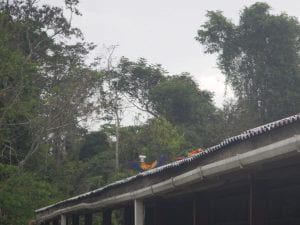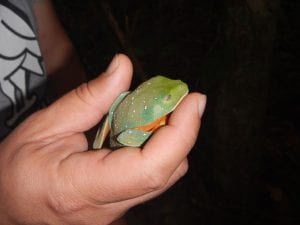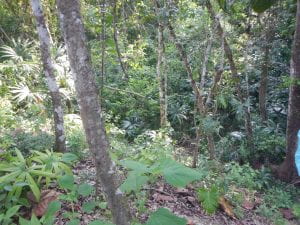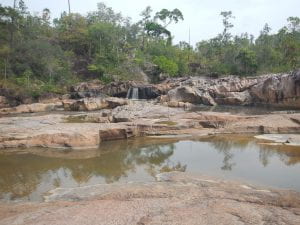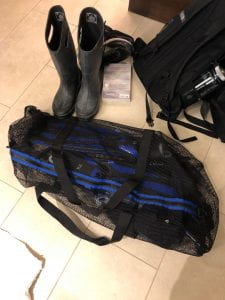May 18th ,2019
I woke up this morning not to my alarm but to the rumble of howler monkey calls in the forest. Unfortunately, I couldn’t tell if they were near Las Cuevas or not as their calls can be heard for miles. We had an absolutely spectacular display before going off to collect the pitfall traps we had set the day before. Two Scarlet Macaws were flying around the clearing, giving us. A good look at their red, yellow, and blue feathers. At one point of the macaws was feeding the other fruits and they even landed on the roof of our cabin!
While collecting the traps I spotted a Morelet’s Tree Frog, a critically endangered species of frog. They have all black eyes and have spectacular orange coloration on the sides of its limbs. Also on the way, we went past the same shaft that had the bats within it. One almost came right up to me. They seemed to be less active as it was around 7:00am and only one bat came up to me. A little fun fact is that bat’s echolocation is so precise that they can tell the shape, trajectory, size, and distance of an object just based off echoes. There are also 46 species of bats in the Chiquibul, 14 of which live in caves.
We then presented our findings of the experiment with a poster that took forever to formulate and make. The day ended with presentations on amphibians, ants, and Communication in the Rainforest.

